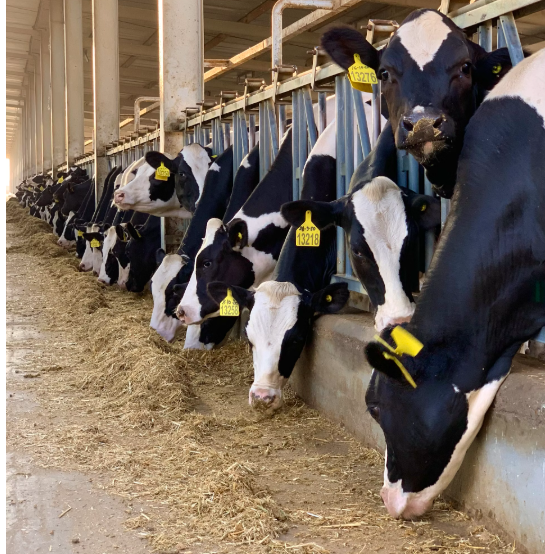We take a look at the he reality of animal cruelty in the tourist industry and how we can all avoid being part of the problem.
The dairy industry, often portrayed as benign and idyllic, conceals a starkly different reality. Beneath the familiar imagery of cows grazing peacefully lies a life of relentless exploitation and suffering for dairy cows and their calves. This read will highlight the heart-wrenching realities faced by dairy cows and their offspring, and give you a better insight as to why, as home to a small herd of cows rescued from this industry, we operate our on-site tearoom as entirely plant-based here at the sanctuary.
A Life of Endless Exploitation

Dairy cows endure a repetitive cycle of impregnation, birth, and milking. Each cycle begins with artificial insemination, a procedure that is far from natural or gentle. Throughout her life, a dairy cow is repeatedly impregnated to ensure a continuous supply of milk. This relentless cycle of pregnancy and lactation takes a severe toll on her body, leading to numerous health issues, including mastitis, lameness, and reproductive problems.
Once a cow gives birth, her milk is harvested for human consumption. Milking machines are attached to her teats multiple times a day, extracting the milk intended for her calf. The intense milking process often leads to painful udder infections known as mastitis. Furthermore, the physical strain of constant milking can cause severe lameness and other musculoskeletal problems.
Shortened Lifespan
Naturally cows can live up to 20 years, but dairy cows are typically sent to slaughter at around 4 to 6 years of age, once their milk production declines. The unrelenting physical demands and poor living conditions mean that dairy cows rarely experience a natural lifespan. In case you were wondering about non-dairy cows, well beef cattle are generally slaughtered at around 18 months, and veal calves at 4-5 months.
The Calves’ Heartbreaking Fate

The fate of calves born into the dairy industry is equally distressing. Immediately after birth, calves are separated from their mothers, an act that causes immense distress to both the cow and her calf. The maternal bond is cruelly severed, leaving the cow to call mournfully for her lost offspring.
Male Calves: A Grim Outlook
Male calves are often deemed useless by the dairy industry, as they cannot produce milk. Many are sent to veal farms, where they are confined in small crates and fed a deficient diet to produce tender meat, some are sent to be raised for beef, while others are shot as surplus to requirements shortly after birth,
Female Calves: Following in Their Mothers’ Steps
Female calves are typically raised to become dairy cows themselves, perpetuating the cycle of exploitation. They are subjected to the same fate as their mothers, enduring repeated impregnation, separation from their calves, and the gruelling milking process.
Ethical Alternatives and Consumer Choices
As awareness of the cruelty inherent in dairy production grows, many consumers are seeking ethical alternatives. Plant-based milk options, such as almond, soy, oat, and coconut milk, provide compassionate and sustainable choices that do not involve animal suffering.
Supporting More Humane Farming Practices
For those who choose to consume dairy, supporting farms that prioritise animal welfare is crucial. There are farmers in the UK turning to methods that keep the calves with their cows (the female calves will eventually go back into the dairy herd, and the males will be raised for beef). If you are interested to know more about these more ethically minded dairy farms, this link will take you to the UK directory of the places using cow with calf methods.
Conclusion
The life of a dairy cow is one of sorrow and relentless exploitation, mirrored in the tragic fates of her calves. By making informed and compassionate choices, consumers can help alleviate the suffering of these gentle creatures and pave the way towards a more humane and just food system. And don’t forget, if you’re looking for things to do in Essex with kids, and specifically an ethically minded animal sanctuary, then do come and visit us at Hopefield Animal Sanctuary and Visitor Centre. We don’t just have our rescue cows here: we’re home to nearly 700 different animals including goats, alpacas, cats, birds, reptiles, horses, donkeys and plenty more. Book via this link for a fun , educational day out with animals that have all been given a second chance at a full and happy life.
Sign up here for the fun updates from the animals, information about the latest news at the sanctuary and exclusive offers and events.



Join Hopefield’s mailing list to be the first to know about all things happening at the sanctuary and exclusive offers and events!